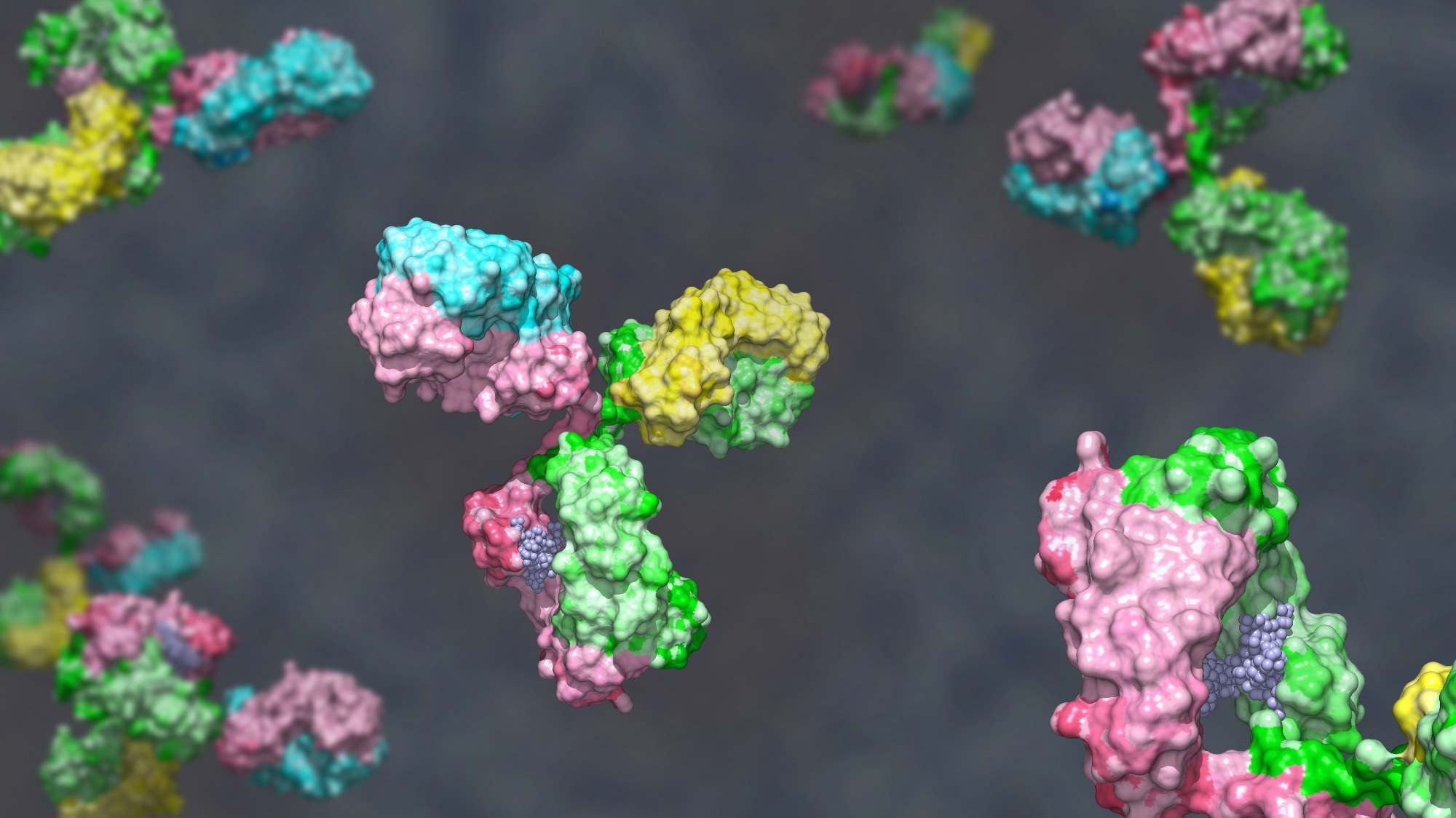A recent Nature Reviews Immunology study has summarized the efficacy of neutralizing antibodies that target four main regions of the spike (S) protein of severe acute respiratory syndrome coronavirus 2 (SARS-CoV-2), namely, the receptor-binding domain (RBD) in the S1 subunit, the fusion peptide region in the S2 subunit, the stem helix region, and the N-terminal domain.
 Review Article: Broadly neutralizing antibodies to SARS-CoV-2 and other human coronaviruses. Image Credit: Huen Structure Bio / Shutterstock
Review Article: Broadly neutralizing antibodies to SARS-CoV-2 and other human coronaviruses. Image Credit: Huen Structure Bio / Shutterstock
Different Types of Coronaviruses
In the past few decades, several pathogenic human coronaviruses (HCoV) have emerged that have caused epidemics and a pandemic worldwide. Severe acute respiratory syndrome coronavirus (SARS-CoV) first emerged in 2003, Middle East respiratory syndrome coronavirus (MERS-CoV) in 2012, and SARS-CoV-2 in 2019, which soon spread across the world, resulting in coronavirus disease 2019 (COVID-19) pandemic.
The ancestral SARS-CoV-2 strain evolved substantially into a number of variants categorized as variants of concern (VOC) and variants of interest (VOI). Unfortunately, several variants of SARS-CoV-2 reduced the efficacy of COVID-19 vaccines, so it is crucial that broadly neutralizing antibodies be developed for prophylactic and therapeutic purposes.
Although SARS-CoV-2 exhibits a lower case-fatality ratio than SARS-CoV and MERS-CoV, it has a high infection rate. Coronaviruses belong to the family Coronavirida that has been classified into four major genera, including alphacoronaviruses (alpha-CoVs), betacoronaviruses (beta-CoVs), gammacoronaviruses (gamma-CoVs), and deltacoronaviruses (delta-CoVs).
Typically, alpha-CoVs and beta-CoVs infect mammals, whereas gamma-CoVs and delta-CoVs primarily infect avian species. SARS-CoV-2, SARS-CoV, MERS-CoV, and HCoVs (HCoV-HKU1 and HCoV-OC43) belong to Betacoronavirus.
Major Factors Associated with Viral Infection
HCoVs are single-stranded RNA viruses that contain phosphorylated nucleocapsid (N) proteins, with cores encapsulated by phospholipid bilayers to form a spherical particle characterized by the presence of outer surface S protein. The S protein contains the S1 and S2 domains, which play a key role in viral infection.
The receptor-binding domain (RBD) of the S1 domain recognizes the host cell surface receptors, which is the first step of viral invasion. The S2 domain is responsible for membrane fusion, allowing the viral genome to enter the host cell. Two other factors associated with virus infection are furin and transmembrane serine protease 2 (TMPRSS2).
SARS-CoV and SARS-CoV-2 utilize the host's angiotensin-converting enzyme 2 (ACE2) receptor, while MERS-CoV uses Dipeptidyl peptidase 4 (DPP4) to enter the host cell.
Pathogens are recognized by neutralizing antibodies (nAbs) or non-neutralizing antibodies (non-nAbs). Generally, nAbs can more effectively reduce pathogenic titers and protect host cells from infection. As stated above, the present study primarily focused on the broadly neutralizing antibodies (bnAbs) that target neutralizing epitopes in the N-terminal domain (NTD), the stem helix (SH), the RBD of the S1 subunit, and fusion peptide (FP) regions in the S2 subunit.
The NTD
4A8 has been recognized to be one of the earliest nAbs to target NTD. There are five structural loops, i.e., N1-N5, in the NTD, of which N3 and N5 mediate the interaction with 4A. Other NTD-targeting mAbs include COV2-2676, 5-24, and COV2-2489, which identify epitopes composed of the N1, N3, and N5 loops.
Many SARS-CoV-2 variants contain mutations within the NTD supersite, reducing the neutralizing efficacy of NTD supersite-recognizing mAbs. For instance, the SARS-CoV-2 Beta strain includes a deletion of NTD amino acid residues at 242–244, making 4A8, 4-8, and 5-24 ineffective.
The RBD
Most anti-SARS-CoV-2 antibodies target the RBD, which has been categorized into different classes based on their target epitopes. The classification of Barnes et al. is most commonly referenced, which grouped RBD-targeting antibodies into four classes based on their mode of binding to the S protein.
Class 1 and class 2 RBD-targeting antibodies tend to lose their neutralizing abilities with the emergence of SARS-CoV-2 VOCs that carry new mutations in the RBM. Hence, their neutralizing breath is limited. In contrast, antibodies in class 3 and class 4 that bind to highly conserved epitopes are more effective in neutralizing SARS-CoV-2 variants and other SARS-like coronaviruses.
In the future, developing a COVID-19 vaccine targeting conserved epitopes could elicit potent broad-spectrum antibodies, which could be effective against the present and newly emerged SARS-CoV-2 variants.
The S2 SH region
As stated above, the SARS-CoV-2 S protein harbors S1 and S2 subunits. The majority of the SARS-CoV-2 nAbs target the neutralizing epitopes in the RBD in the S1 subunit and NTD. However, these epitopes are prone to undergo mutations, which increase the possibility of immune escape by virus mutants.
Compared to the S1 domain, the neutralizing epitopes in the S2 subunit are more conserved. Hence, nAbs targeting the S2 epitopes have a greater probability of eliciting broad-spectrum nAbs to SARS-CoV-2 and other HCoVs. For instance, S2P6 broadly neutralizes all beta-CoVs by targeting the S2 subunit.
The S2 FPs
S2 FPs domains are highly conserved among all coronavirus genera, indicating the possibility of inducing broad-spectrum antibodies. Some of the antibodies produced targeting this epitope exhibited superior neutralizing activity against alpha-CoVs, beta-CoVs, gamma-CoVs, and delta-CoVs.
COV44-62 and COV44-79 antibodies isolated from convalescent COVID-19 patients could bind the S2 FP region. COV44-62 interacted with the S2 domain of SARS-CoV-2 and neutralized beta-CoVs and MERS-CoV.